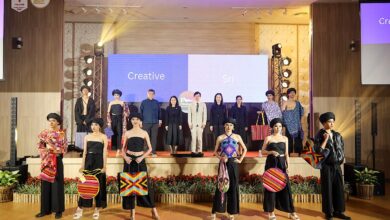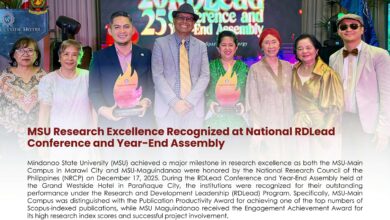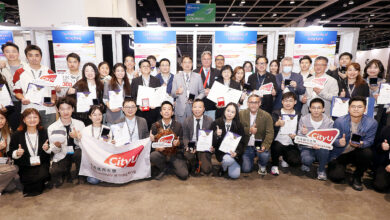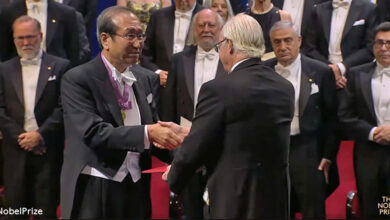World University Research Rankings (WURR): Preview and Launch

The World University Research Rankings, a new university ranking system developed in Singapore, will be launched online on September 3 (Thursday) 4pm (SGT/GMT+8).
Universities all around the world are currently ranked by a few prominent entities, including Quacquarelli Symonds (QS) and Times Higher Education (THE). Each year, universities will use their ranks on these two benchmarks to do better.
Perceiving an important gap in the methodology in ranking universities, World Scientific and WURR Consultancy collaborated in jointly publishing the World University Research Rankings, also known as WURR.
Introducing the World University Research Rankings
The World University Research Rankings (WURR) is a university ranking index based on novel methodology designed to evaluate research multi-disciplinarity, complemented by indicators to gauge research impact and research collaborative-ness. Together, these three key aspects make up the composite index for the WURR.
As the first of its kind, WURR is designed to measure and benchmark multi-disciplinary collaborative research; wholly derived from performance-centric evidence-based data, it offers an unique unvarnished insights for organisations in the 3P sectors (Private, Public, People) to identify university partners best positioned to deliver optimal returns on R&D investment, so as to create game-changing transformational impact.
WURR presents an in-depth, wide-ranging study of about 12.7 million Web of Science documents across six research fields and forty-two research categories based on the OECD’s schema in Web of Science’s InCites. The study was conducted across a 10-year timeframe from 2009 to 2018 for 250 global universities. The results and findings, including analysis by geographical representation (country and continent) and correlation between indicators and aspects, are reported in detail in the publication.
How is WURR different from existing major rankings?
The World University Research Rankings (WURR) is fully based on actual research publications data from an independent source (Web Of Science), does not require data from universities, and does not attribute any weightage to surveys of opinions. WURR evaluates three key components:
- research multi-disciplinarity,
- research impact, and
- research collaborative-ness
To quantitatively measure these three aspects, seven indicators were selected with Web of Science as the source of data as shown below:
| Research Multi-disciplinarity | % multi-field documents | Degree of multi-disciplinary research across different fields |
| % multi-category documents | Degree of multi-disciplinary research across different categories within same research field | |
| Research Impact | Category Normalised Citation Impact | Average standard of University’s research impact |
| % documents in Q1 journals | Proportion of University’s publications in most impactful journals | |
| % documents in top 1% | Proportion of peaks of excellence in University’s research impact | |
| Research Collaborative-ness | % industry collaboration | Degree of collaborative-ness across academia-industry boundaries |
| % international collaboration | Degree of collaborative-ness across international borders |
In comparison with QS and THE (as of July 2020)
Quacquarelli Symonds (QS) evaluates universities based on the following six indicators: Academic Reputation: 40%, Employer Reputation: 10%, Faculty/Student Ratio: 20%, Citations per faculty: 20%, International Faculty Ratio: 5%, International Student Ratio: 5.
TIMES Higher Education (THE) evaluates universities based on the following thirteen indicators: Teaching reputation: 15%, Staff to Student ratio: 4.5%, Doctorate to Bachelor ratio: 2.25%, Doctorate awarded to academic staff ratio: 6%, Institutional income: 2.25%, Research reputation: 18%, Research productivity: 6%, Research income: 6%, Citations: 30%, Proportion of international students: 2.5%, Proportion of international staff: 2.5%, International collaboration: 2.5%, Industry Income: 2.5%.
Why the focus on applied research?
Applied research undertaken by world universities in the last few decades have become the major driving forces behind the Fourth Industrial Revolution (4IR), and multi-disciplinary collaborative research is growing in importance, specifically in creating impactful value for Industries, Governments and Societies.
Will WURR’s criteria be broadened over time?
The World University Research Rankings (WURR) is open to receiving feedback from universities and other stakeholders about other areas of research performance benchmarking that you would like the WURR report to cover.
What WURR means to universities
The World University Research Rankings (WURR)’s criteria has led to greater diversity among the top of WURR rankings with smaller, younger and comparatively less renowned universities from more countries making it to the top ten. For WURR’s 2020 rankings, six of the top 10 are small/medium size universities, and six countries (USA, Netherlands, Denmark, France, Switzerland and Singapore) are represented in the top 10 instead of just the traditional two or three.
WURR will be useful to universities seeking to improve themselves in different areas of research. WURR is an evidence-based index which offers insight into applied research undertaken by world universities. The goal is to inform universities objectively how they compare to their peers; in areas of applied research underscored by their relative strengths and weaknesses; raise awareness and promote research collaboration and multi-disciplinary research. The indicators that were chosen reflect this aspiration to assist universities to better understand how they can seize opportunities in this increasingly complex and inter-connected world, and to focus on how universities research excellence can be assessed holistically with respect to how they are able to harness the synergies created from bringing together multi-disciplinary and collaborative teams to sustain and elevate research impact.
What WURR means to prospective university students
Students who want to pursue further studies or research in applied research, would be able to gain insights on the strengths and quality of faculty and research in the university, as well as the university’s current research foci and direction. World University Research Rankings (WURR)’s research impact analysis of each university could also be used by prospective students to gauge the possible impact of their research area(s) of choice.
WURR Consultancy Pte Ltd is a Singapore consulting firm that provides strategic advice, in-depth analysis and data-driven guidance to universities and research institutes globally.
World Scientific Publishing is a leading international independent publisher of books and journals for the scholarly, research and professional communities. Founded in 1981 to connect research in Asia with the world, World Scientific collaborates with prestigious organisations like the Nobel Foundation and US National Academies Press to bring high quality academic and professional content to researchers and academics worldwide. The company publishes about 600 books and over 140 journals in various fields annually. To find out more about World Scientific, visit www.worldscientific.com.
Details of the Launch
Launch of World University Research Rankings (WURR)
Date: 3 September 2020 (Thursday)
Time: 4pm–4:40pm
RSVP to Amanda/Jason, at [email protected], [email protected] by 25 August (Tuesday), 5pm (SGT / GMT+8) to request for the Zoom Link.
The Programme
| 4pm | Introductory remarks by Dr KK Phua, Chairman, World Scientific
|
| 4.10pm | Introduction of WURR by Prof Yeo Kiat Seng, Author of the World University Research Rankings 2020
|
| 4.20pm | Launch and demo of WURR website by Dr Rick Lee, General Manager, World Scientific |
| 4.30pm | Q&A session
|
| 4.40pm | End of launch |
Programme may be subject to change without prior notice.
Image by StartupStockPhotos from Pixabay




